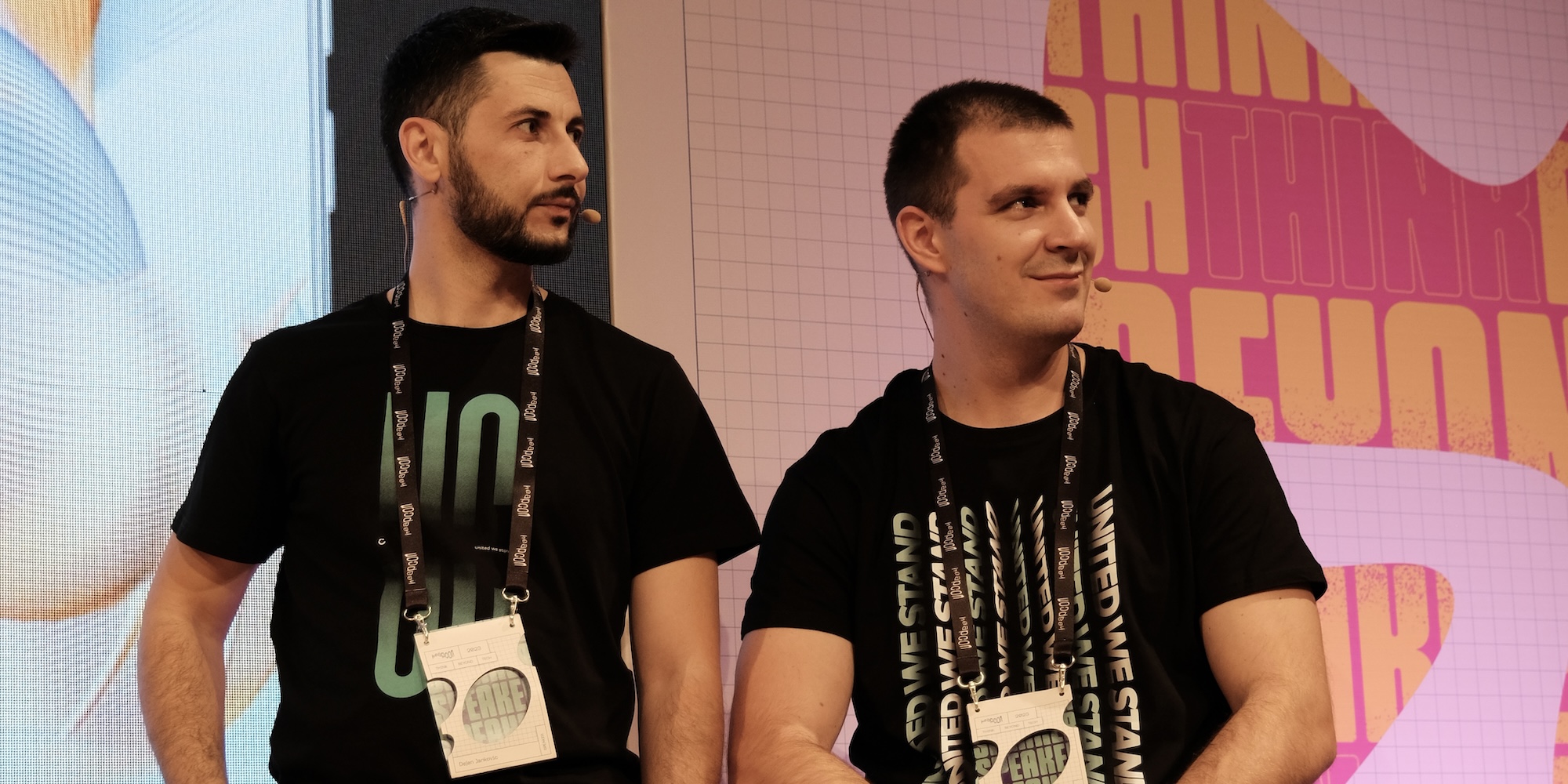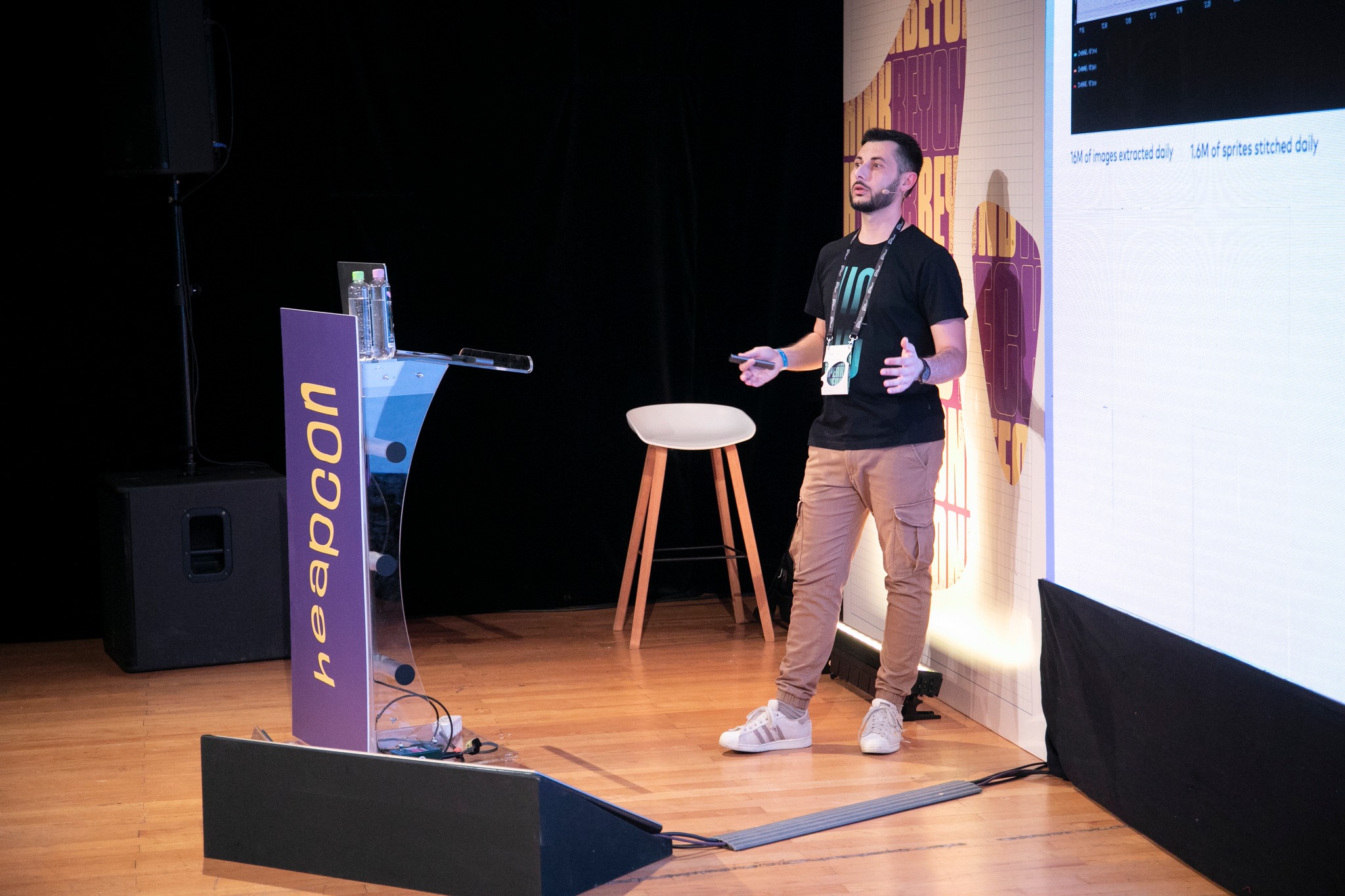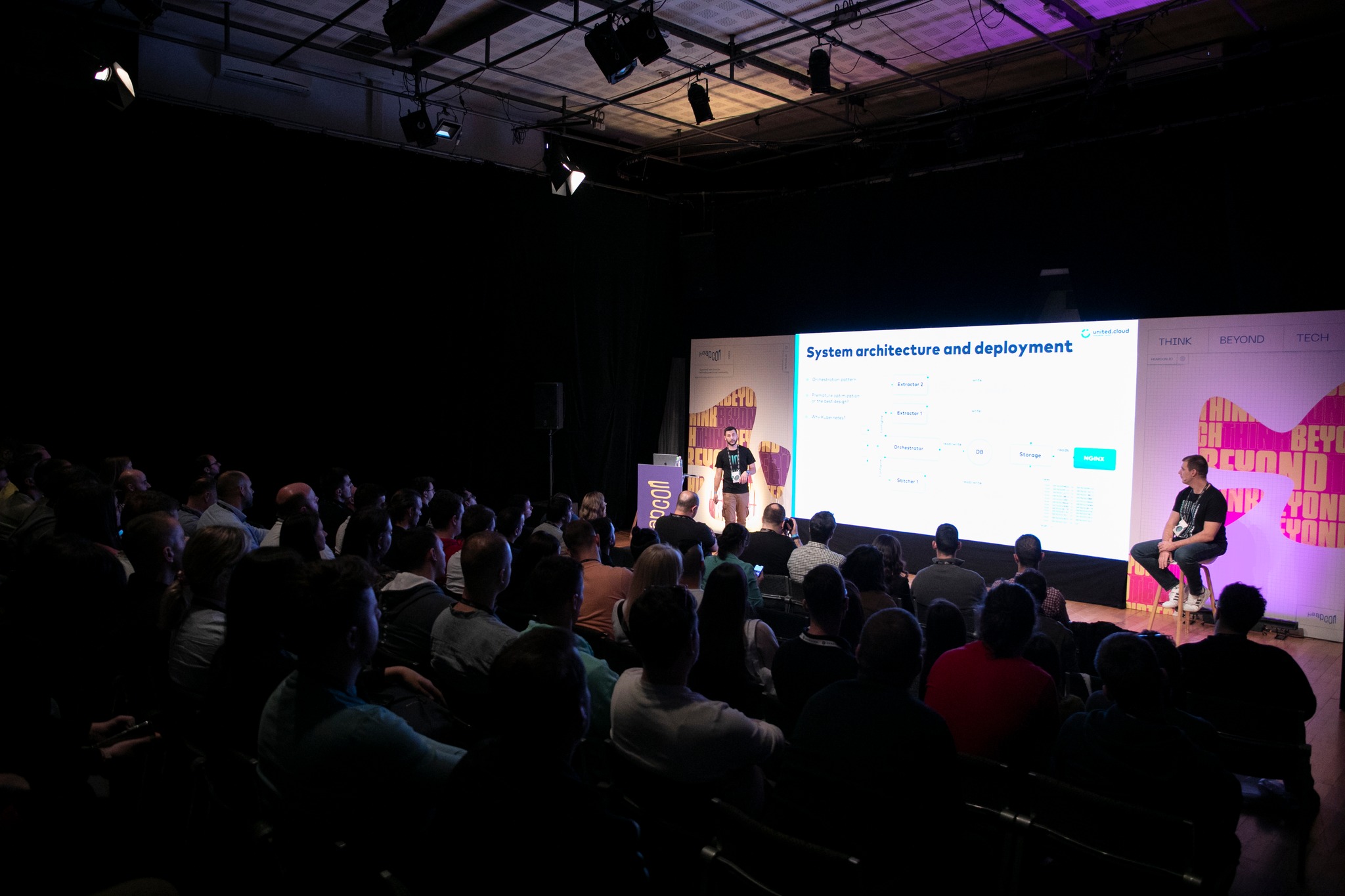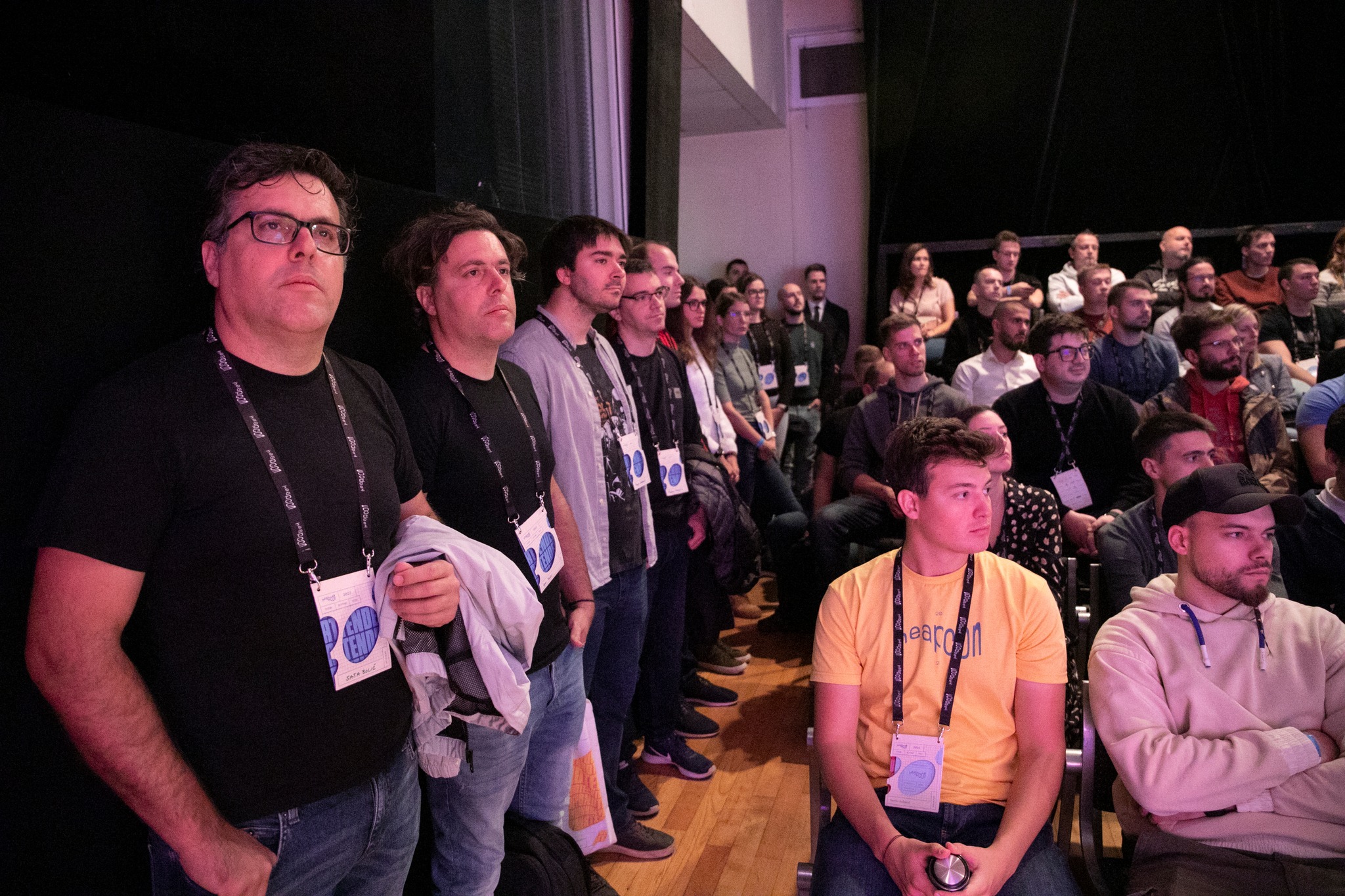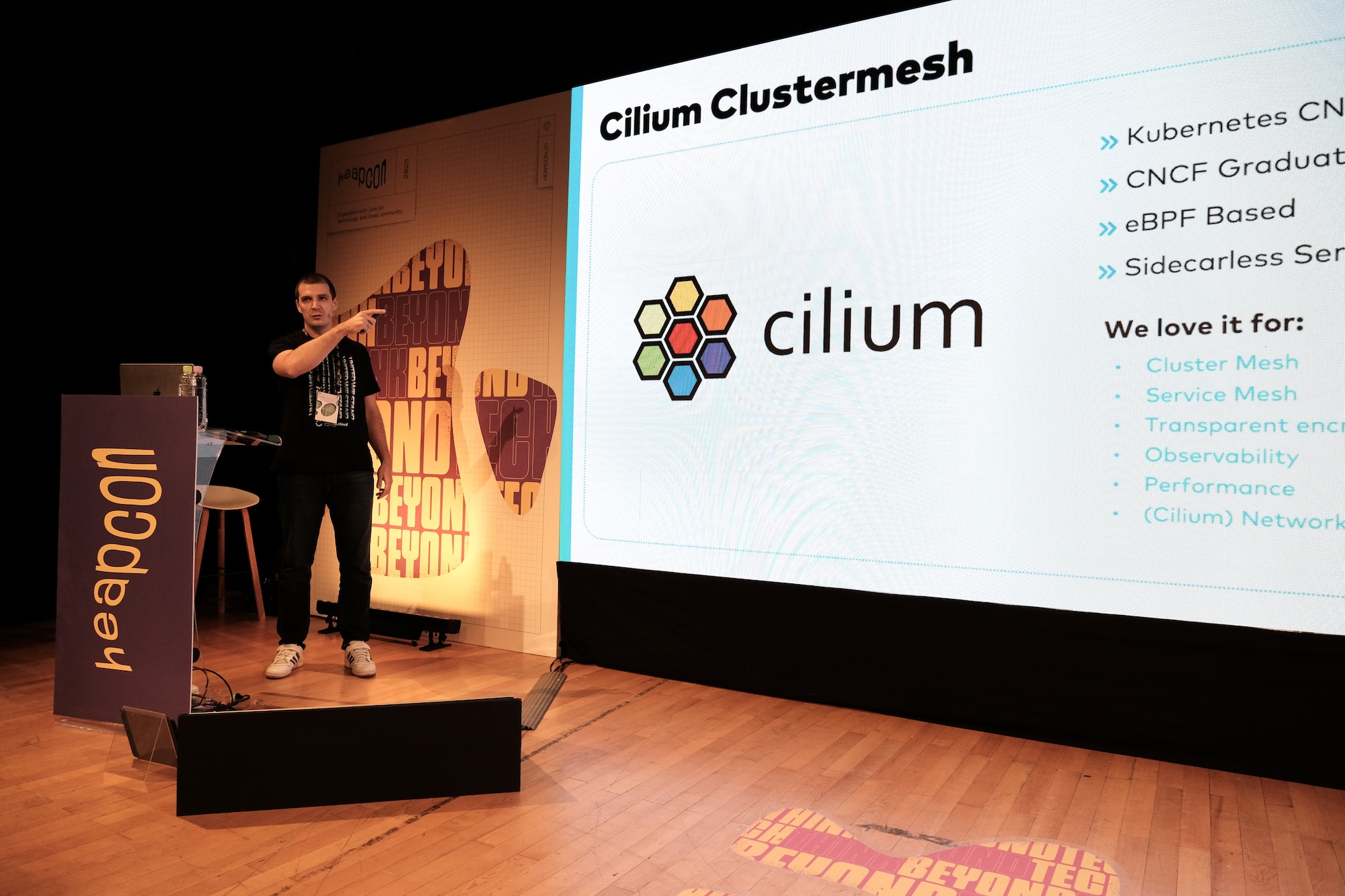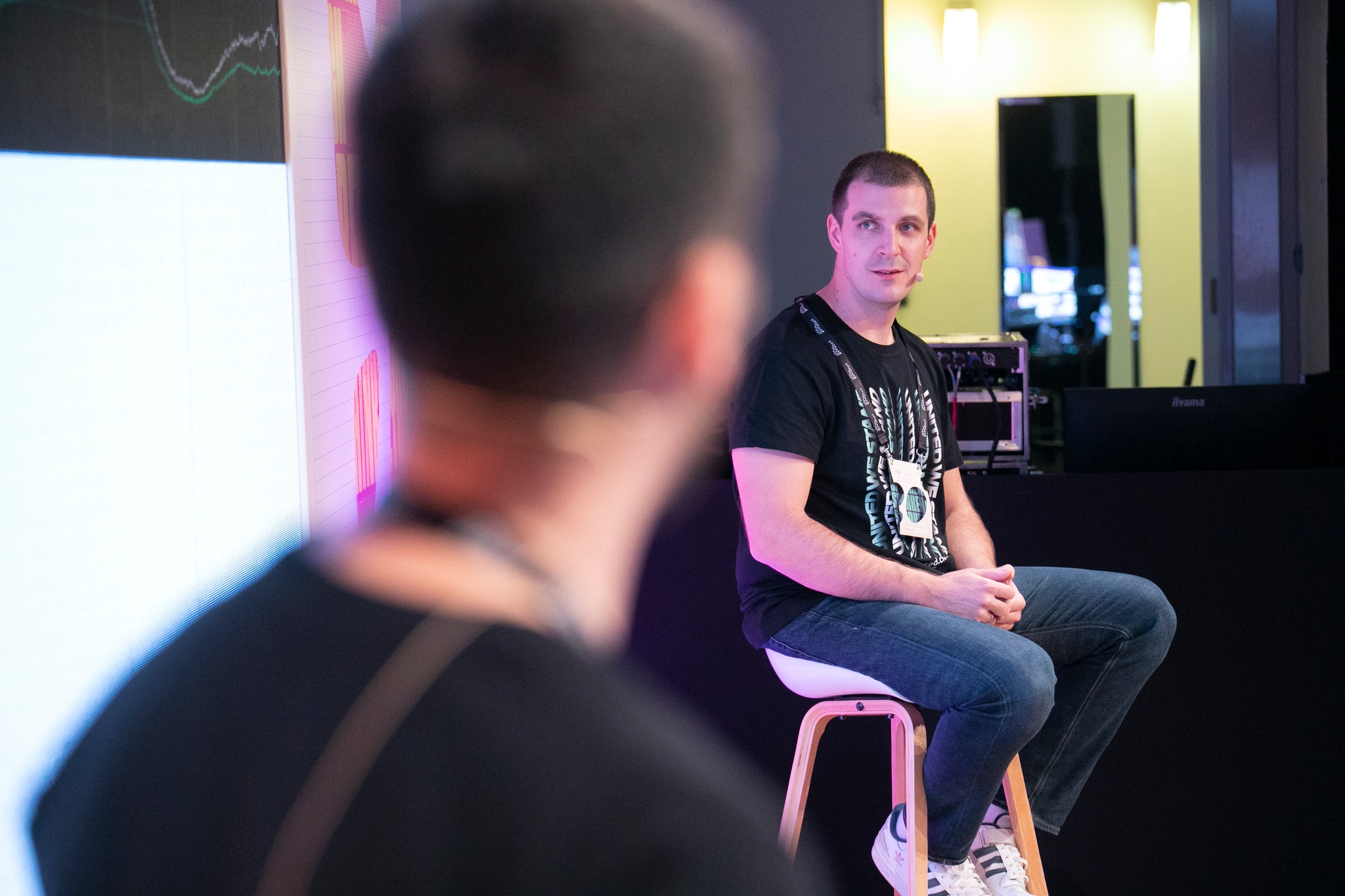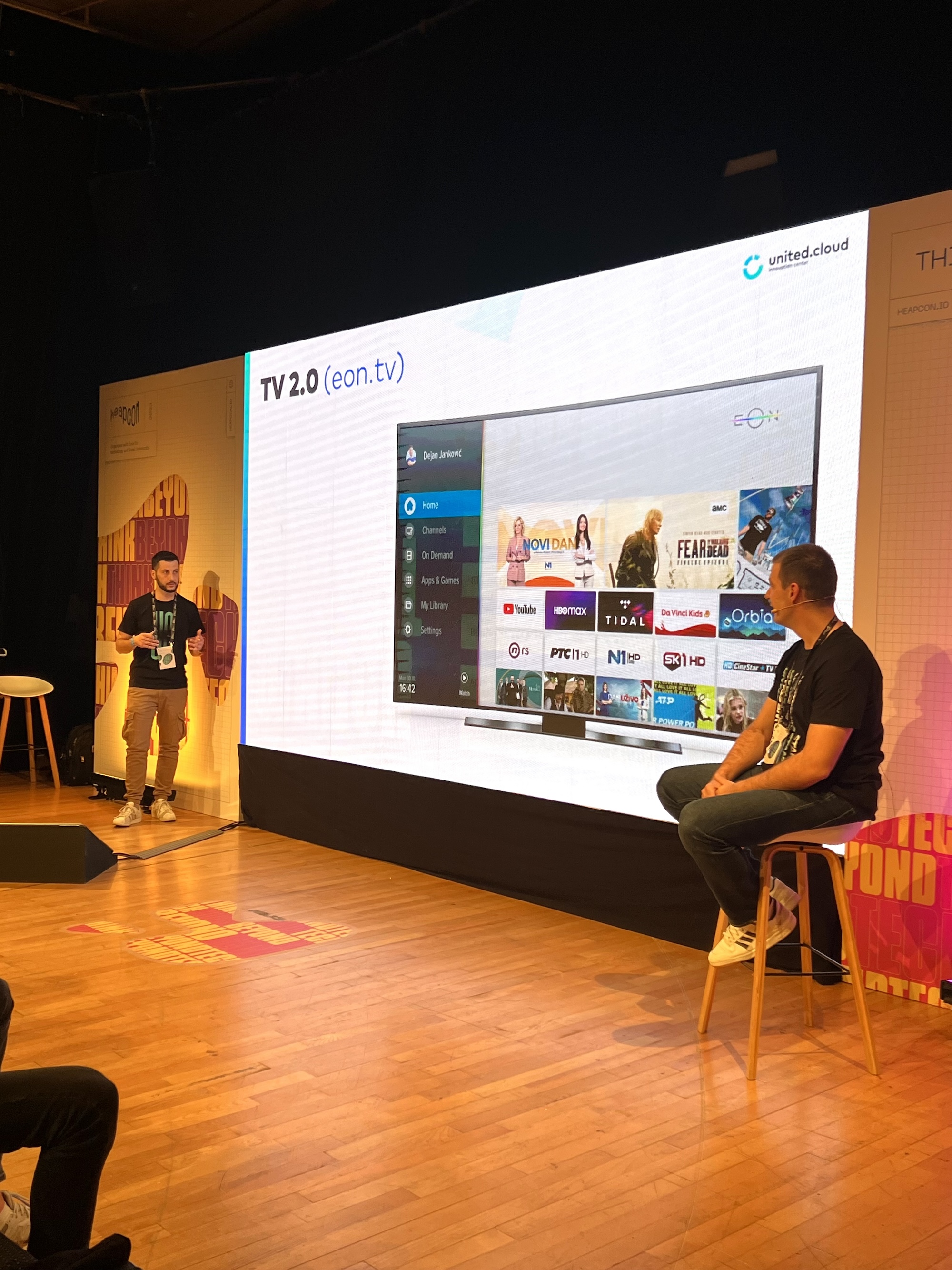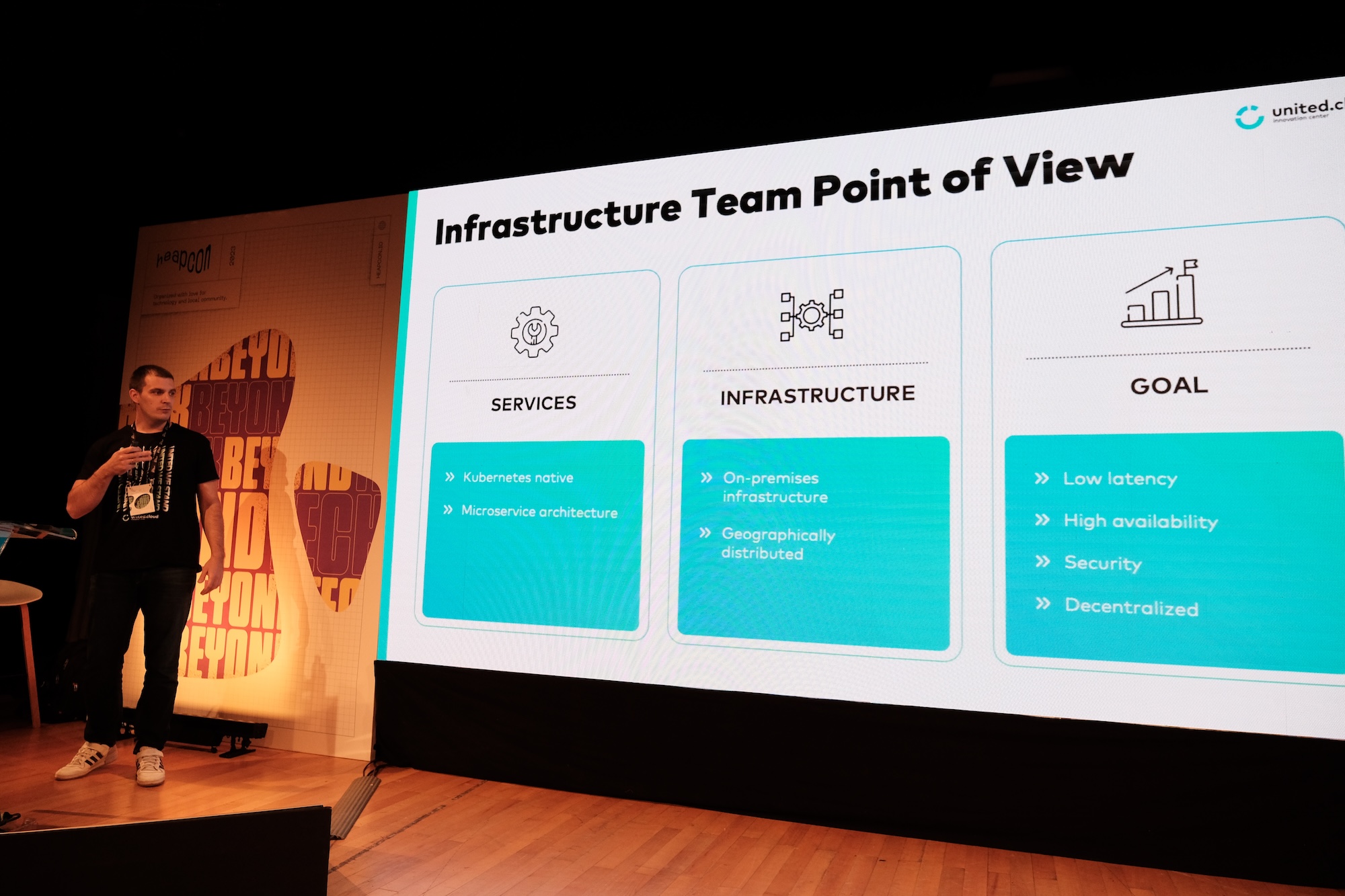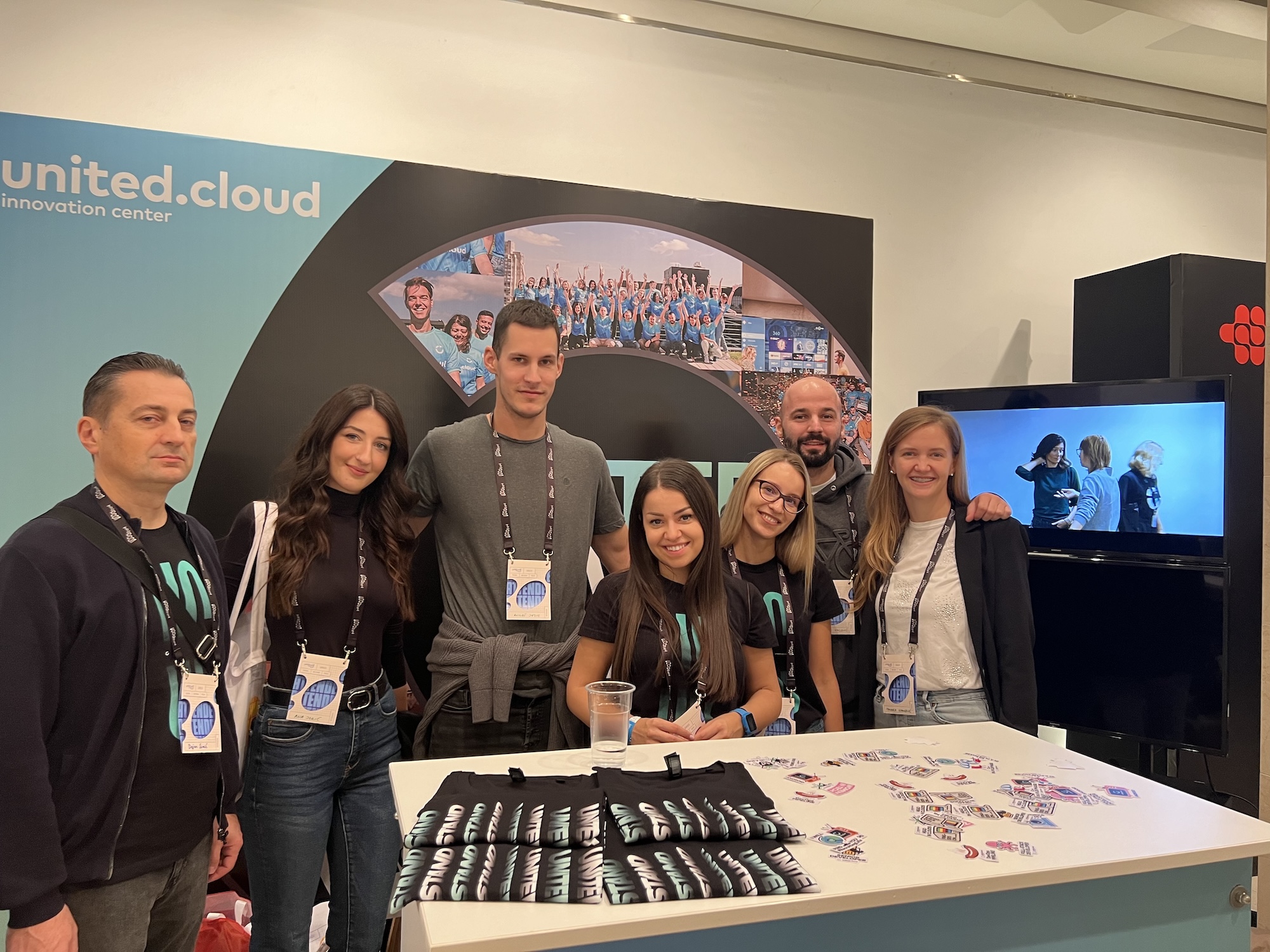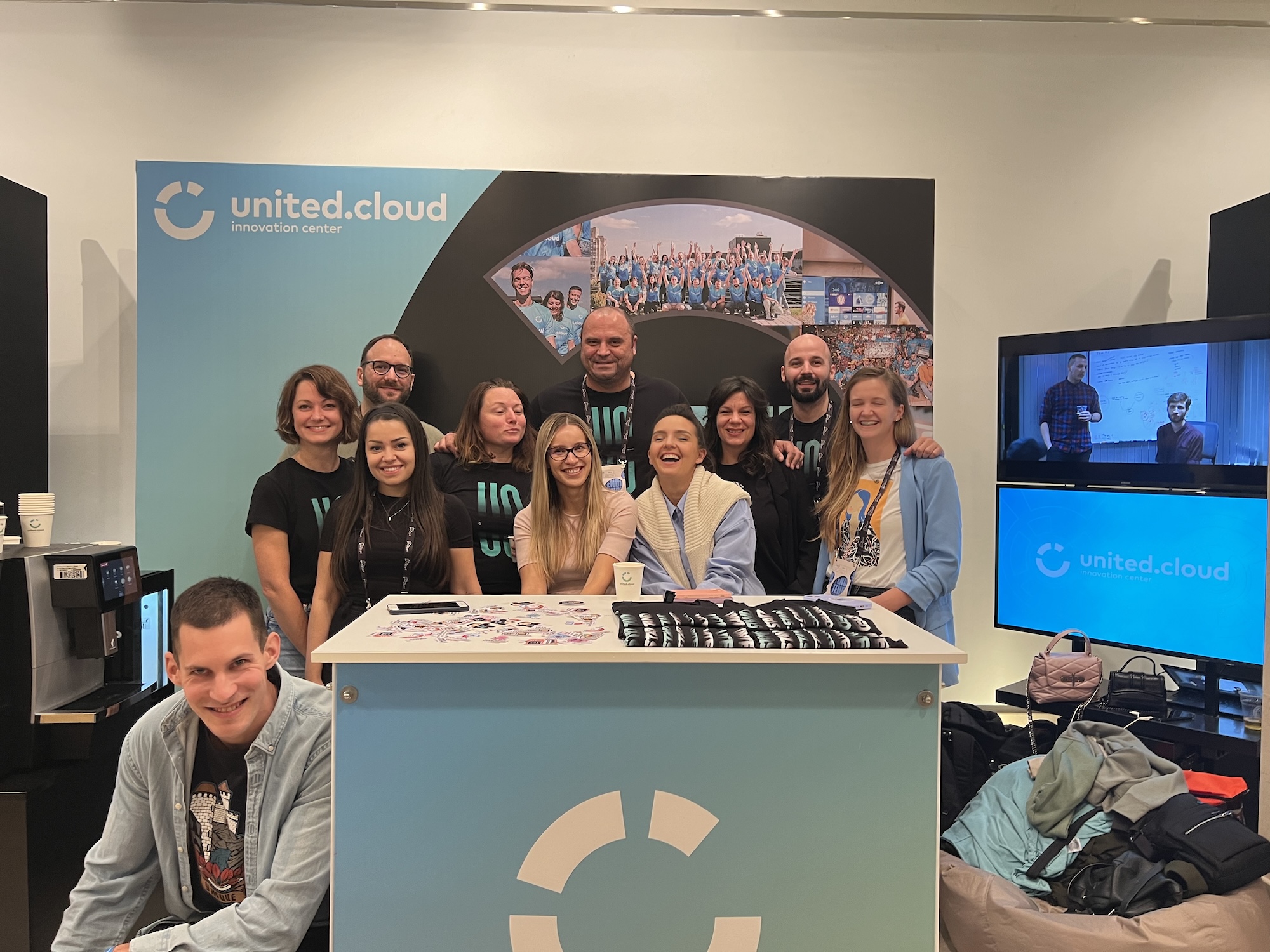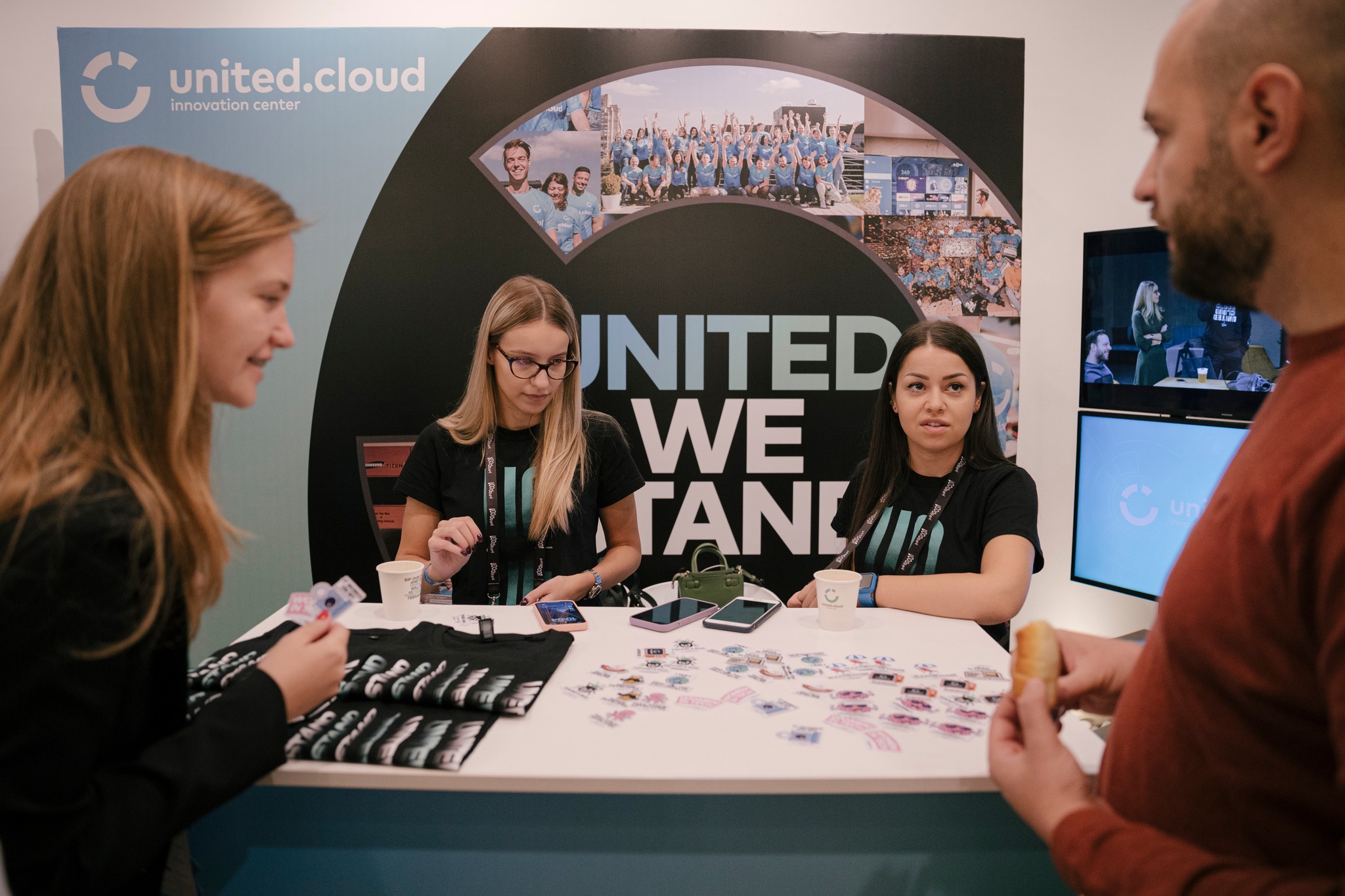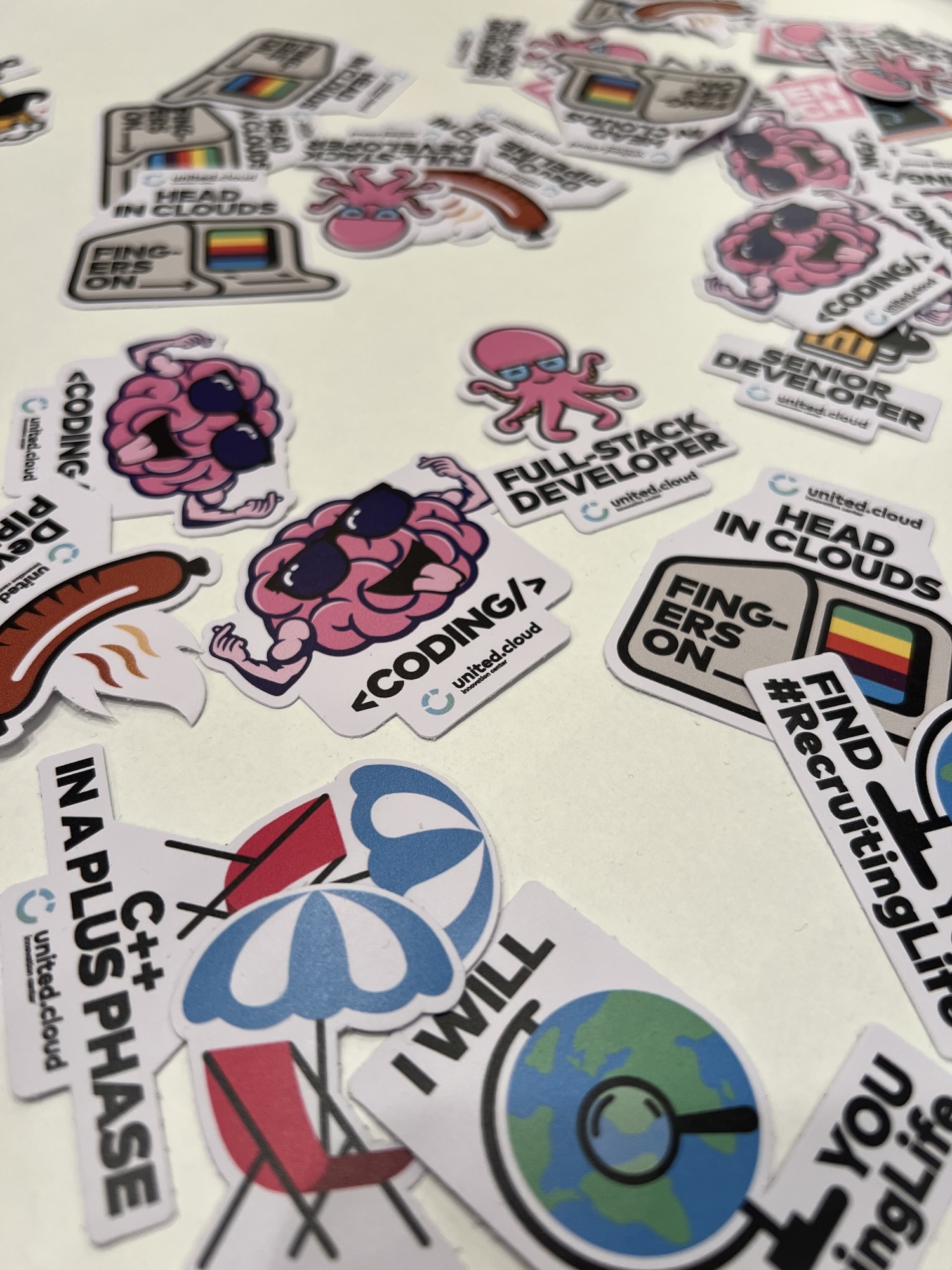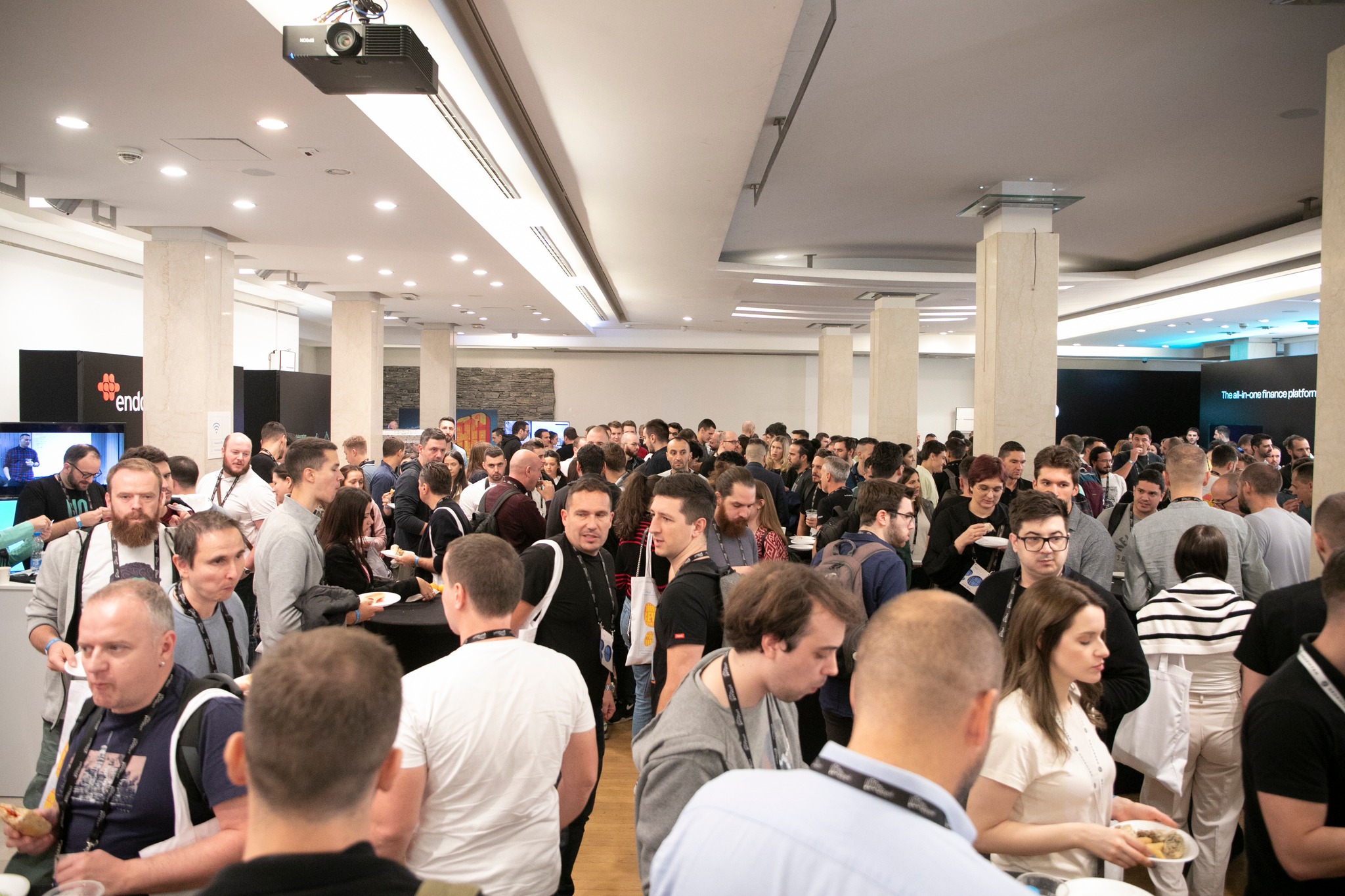Heapcon, the largest IT conference in the Serbian market, traditionally organized by Heapspace, gathered the biggest names from the tech industry this November. With over 30 speakers and support from more than 21 IT companies, the event attracted over 500 attendees. Under the flagship slogan "Think beyond tech," participants enjoyed various topics and talks, interacted with companies, and engaged in extensive networking.
As Heapcon's Gold Sponsor, we believe in nurturing the tech community and recognize the conference's importance as a hub of creativity and collaboration in the tech world.
Our senior engineers Boris Petrović and Dejan Janković shared insights into how our production is running as fast as an overcaffeinated teenager! In a packed conference hall, we discussed our challenges in navigating live video content, the evolution of our flagship TV 2.0 platform (globally recognized under the brand name EON TV), and its innovative fast-forward and rewind feature. We delved into our tech choices like Nginx and Lua. Additionally, attendees had the chance to hear about Cilium, the centerpiece of our on-premises Kubernetes setup, showcasing its strength, speed, and ease of production monitoring.

